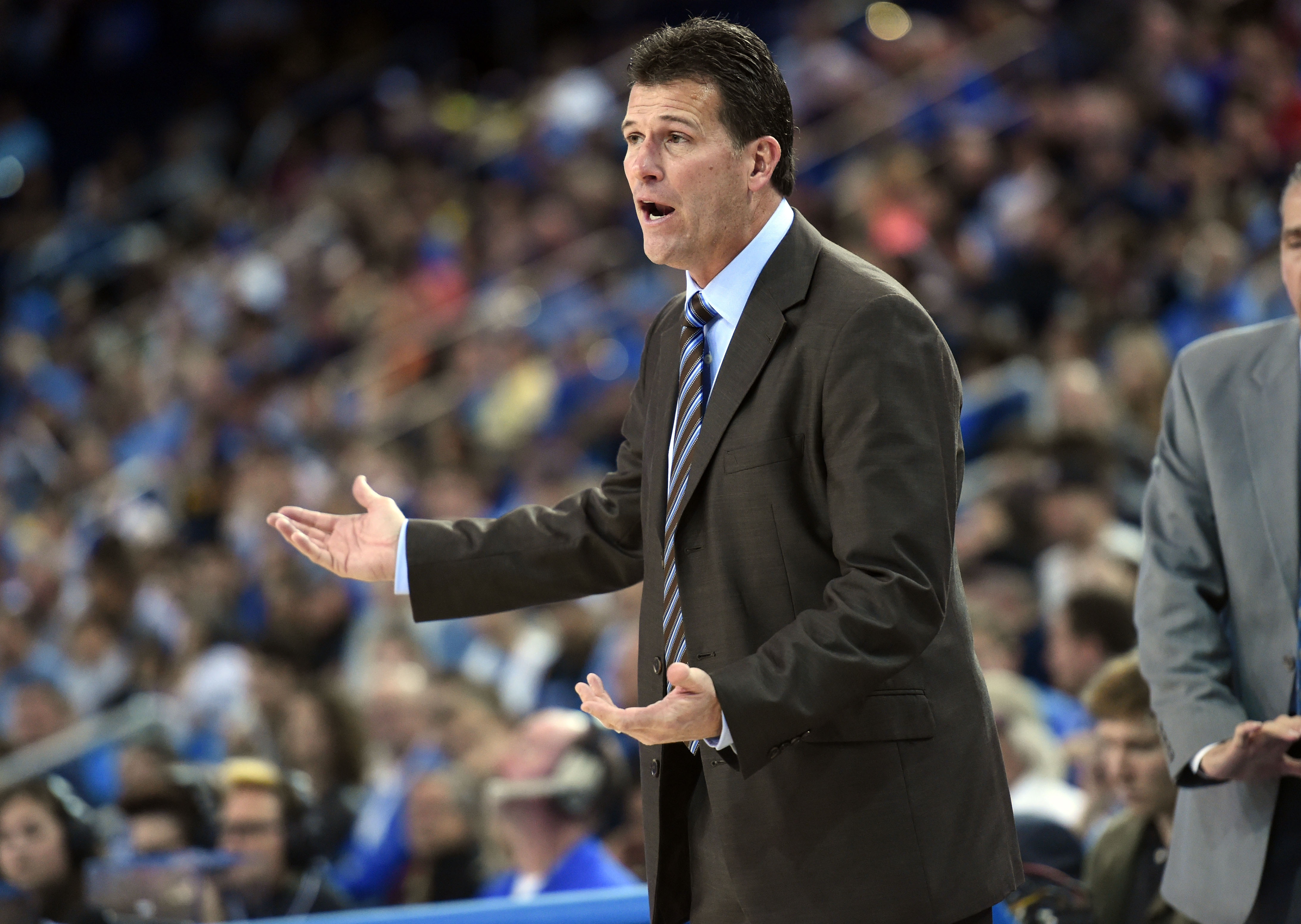
After guiding UCLA to one of its worst seasons in recent memory, what questions are facing Steve Alford and the Bruins? (Stephen Carr/Staff)
Was it a bad season? Yes. Absolutely, unequivocally, yes. Finishing with an overall record of 15-17 would qualify as bad for most major programs, let alone the one that holds more national titles than anyone else.
There shouldn’t be much dispute about this, but Steve Alford emphasized this week that the Bruins shouldn’t be dinged for a “bad season” — only for a bad two-and-a-half months. But given that the whole season only lasts about four months, this seems like a case of splitting hairs.
Most coaches should be granted leeway for the occasional bad season. It’s the timing of this season — as as well as the way it unfolded — that should cause concern about the viability of the Alford era. Yes, he reached the Sweet 16 twice, but had the benefit of inheriting a number of future NBA players. This season featured a roster almost entirely of his own design. Despite that, this team saved its worst basketball for last, losing its last five games by an average of nearly 12 points.
Can a top recruiting class turn things around? Perhaps. The nature of modern college basketball helps facilitate quick turnarounds, with one-and-done players making the type of impact that isn’t feasible in other sports. As the season spiraled down, Alford made increasingly frequent references to his top-five group of signees. He did so with good reason: Lonzo Ball is as well regarded as any point guard prospect in recent memory, and T.J. Leaf should make the frontcourt much more offensively skilled.
But Ben Howland also brought in a loaded recruiting class before his final season, landing Shabazz Muhammad, Kyle Anderson, Tony Parker and Jordan Adams in what was a No. 2-ranked haul. Continue reading “What’s next for UCLA men’s basketball under Steve Alford?” »


